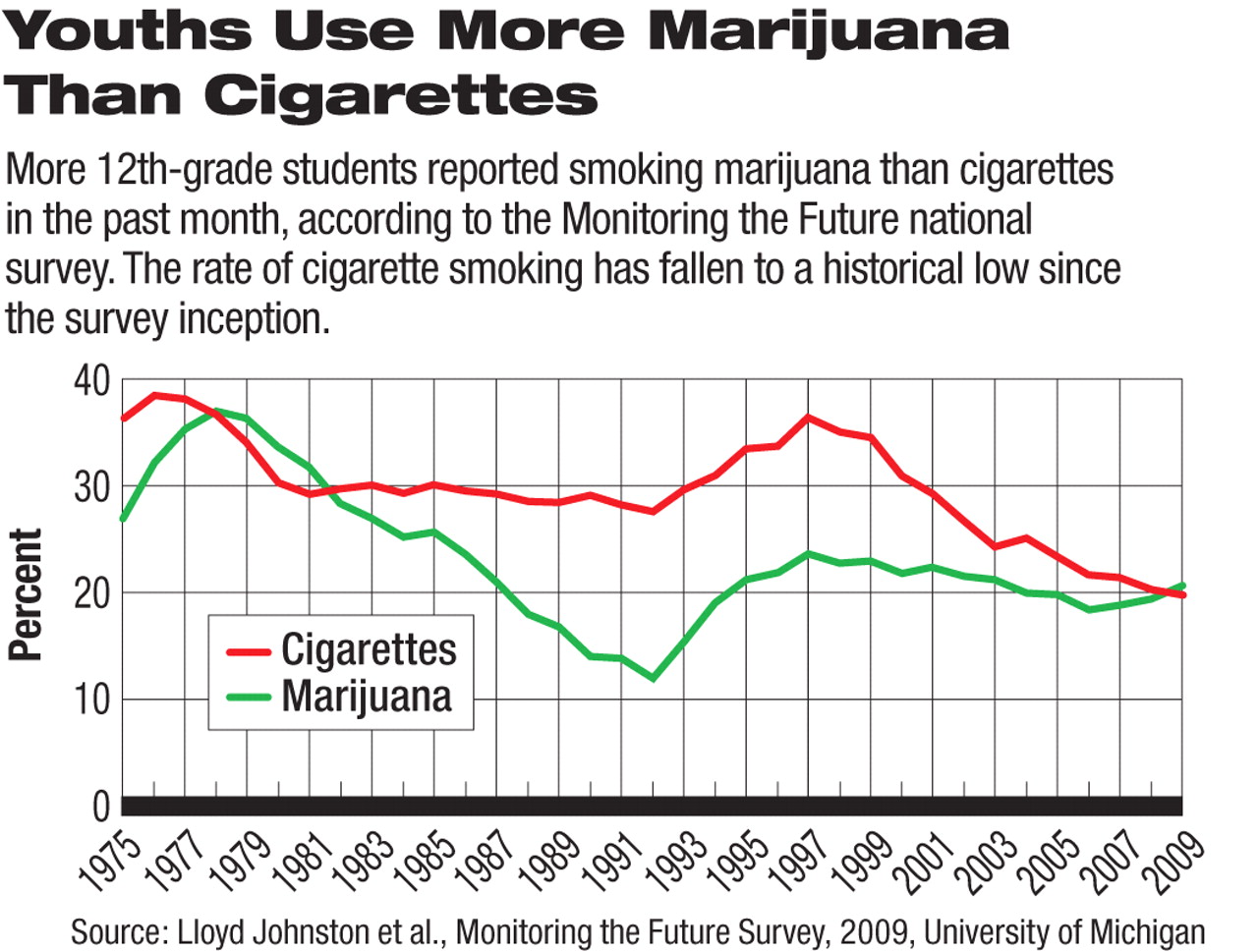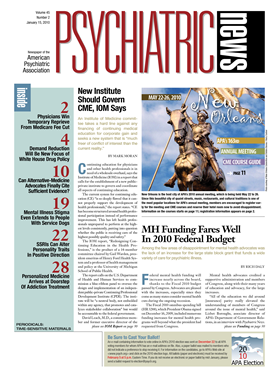Although substance use rates generally have remained level or even declined slightly among high school students, their decreasing perception of harm toward some illicit substances signals a potential rise in their future use, the latest data from a national survey suggest.
More than 46,000 students in the eighth, ninth, and 12th grades throughout the United States participated in the 2009 Monitoring the Future Survey funded by the National Institute on Drug Abuse (NIDA). The survey has been conducted annually by researchers at the University of Michigan since 1975.
Among the encouraging results, the rate of past-year methamphetamine use in all three grades continued its decline since 2004, and cigarette smoking remained at its lowest level since the inception of the survey. Alcohol use also continued to decrease in all three grades. The rates of past-year cocaine and ecstasy use decreased as well from the previous survey.
Other substance use trends, including those for heroin, other narcotics, inhalants, and tranquilizers, were little changed for the past year, however. Hallucinogen use declined in 12th graders. Over all, the highest 30-day prevalence (reported use in the prior month) was seen for alcohol use, followed by use of marijuana and cigarettes.
Long-term trends indicate that the rate of marijuana use has been holding steady over the last five years with a slight uptick in the past three years (see chart). Among the eighth, 10th, and 12th graders, 11.8 percent, 26.7 percent, and 32.8 percent, respectively, reported using marijuana at some time in the prior year. However, the rates of disapproval for regular marijuana use have been declining for several years, which forecasts likely increases in marijuana use in the near future.
At a press conference on December 14, 2009, Lloyd Johnston, Ph.D., principal investigator of the survey, acknowledged that the shift in students' attitude toward marijuana may have been influenced by recent medical-marijuana legislation in some states and decriminalization debates in the larger social environment. Johnston is a research professor and distinguished research scientist at the University of Michigan's Institute for Social Research.
Meanwhile, misuse of prescription drugs, especially prescription narcotics and analgesics, continues to cause concerns. “Particularly worrisome are pain medications, analgesics, such as Vicodin and OxyContin,” Nora Volkow, M.D., director of NIDA, said at the press conference.
Vicodin and OxyContin were third and ninth among the most frequently used substances reported by respondents. Misuse of prescription medications poses particular difficulties for prevention efforts, Volkow said, as young people believe these drugs are safer than illicit substances since they are prescribed by physicians.
Overall, seven of the 10 most-abused drugs (excluding alcohol and tobacco) were prescription or over-the-counter drugs, including nonmedical use of amphetamines (prescribed to treat attention deficit/hyperactivity disorder), tranquilizers, and cough medicine.
“The good news about prescription drugs is that their uses are not rising, but the bad news is that they haven't gotten much better either,” said Johnston. Nonmedical use of prescription narcotics, which was only measured in 12th graders, remained flat at the peak level it reached during the past decade, he noted.
“[Young people] are exposed to an incredible amount of pro-drug messages in the media and the popular culture,” said R. Gil Kerlikowske, director of the White House Office of National Drug Control Policy, at the press conference. “When beliefs and attitudes soften, drug-use behavior often worsens.” He promised to invest more government resources in evidence-based prevention and treatment efforts for reducing youth substance use problems.


